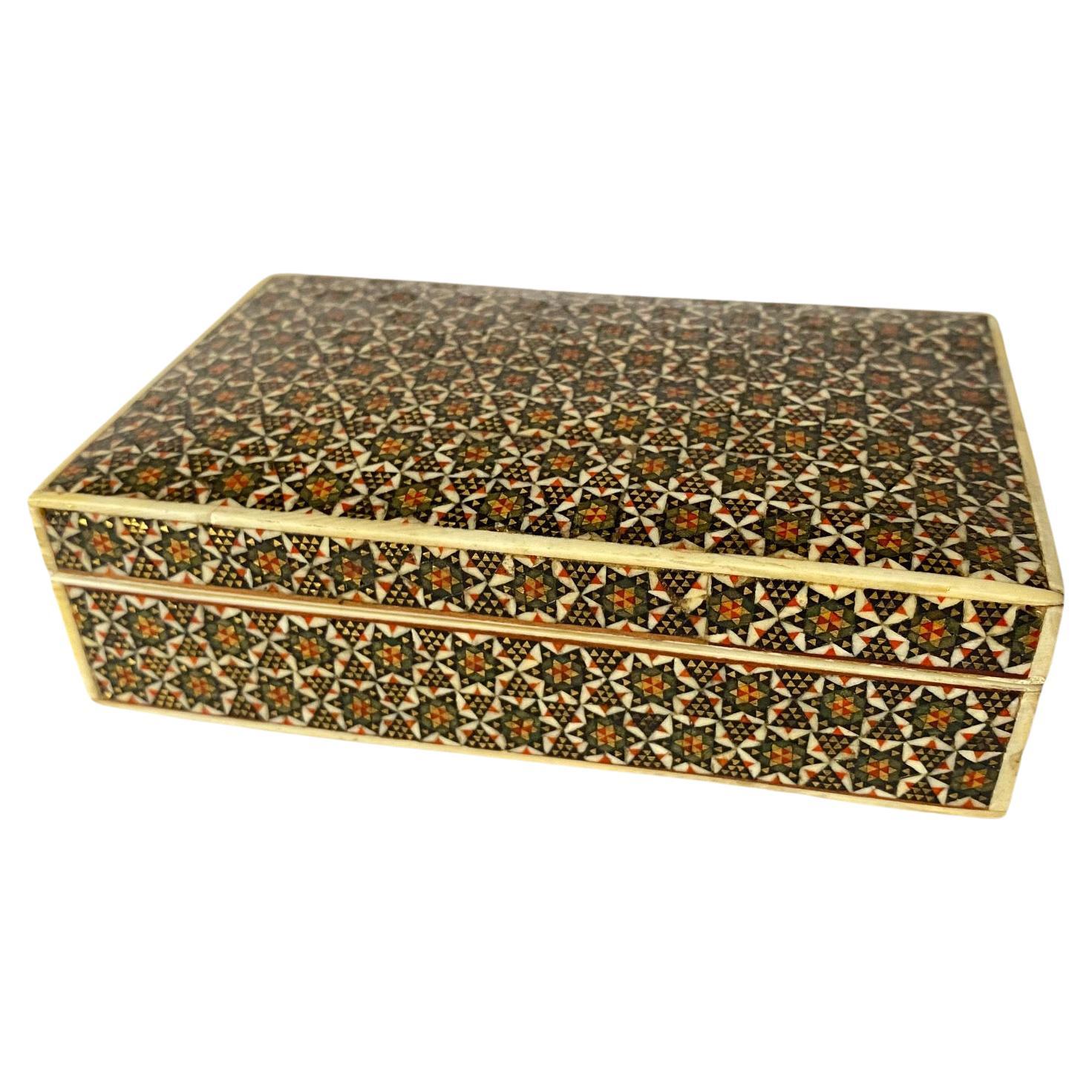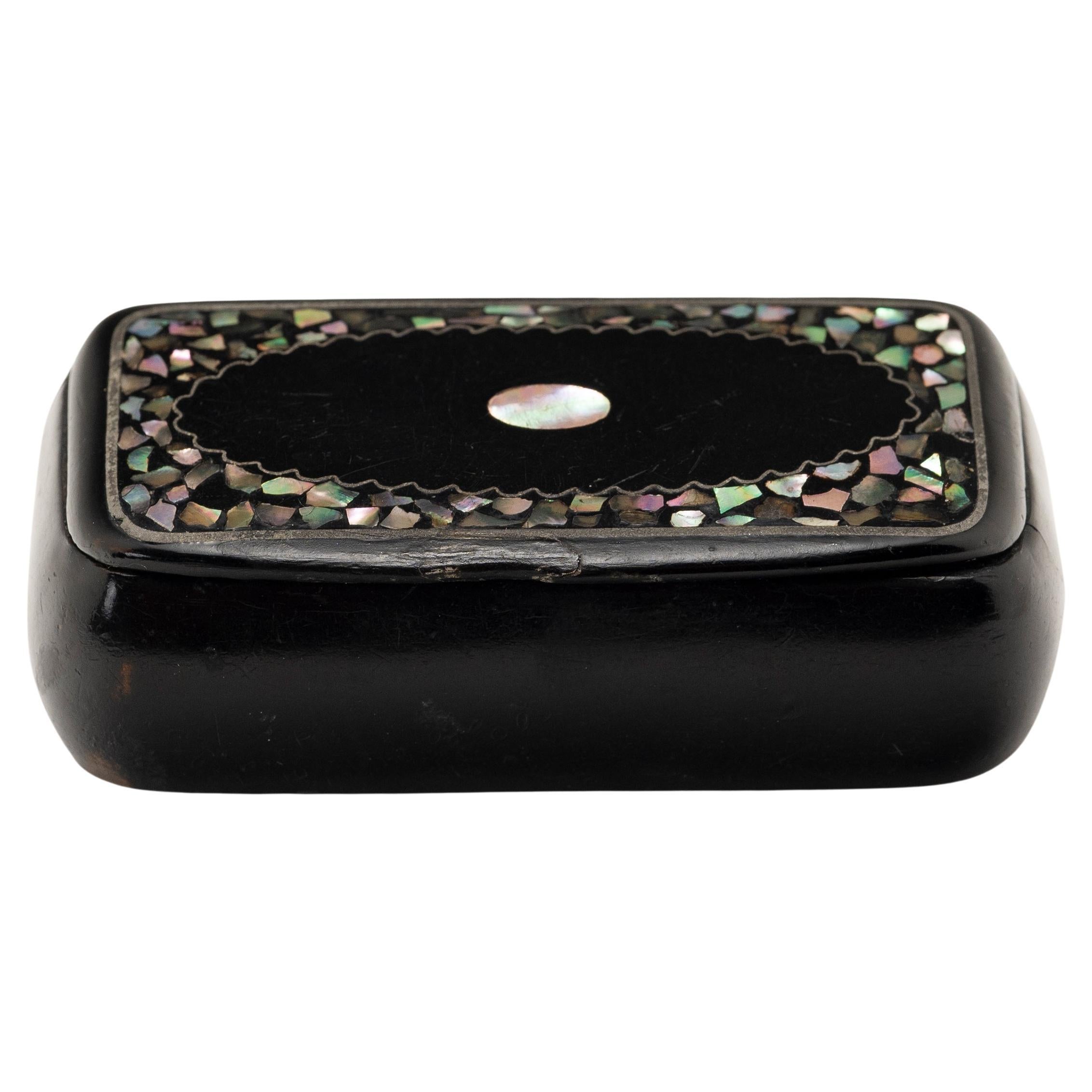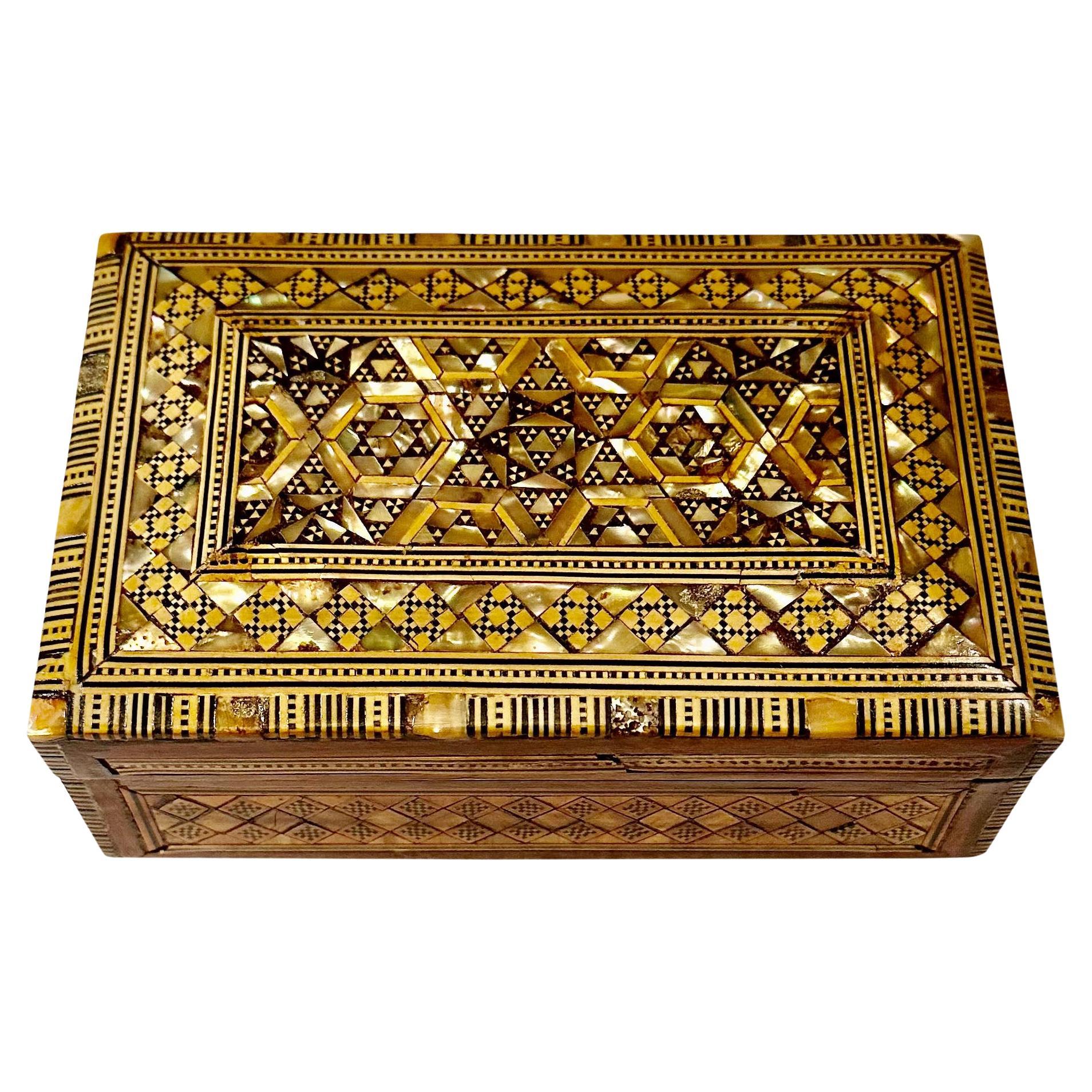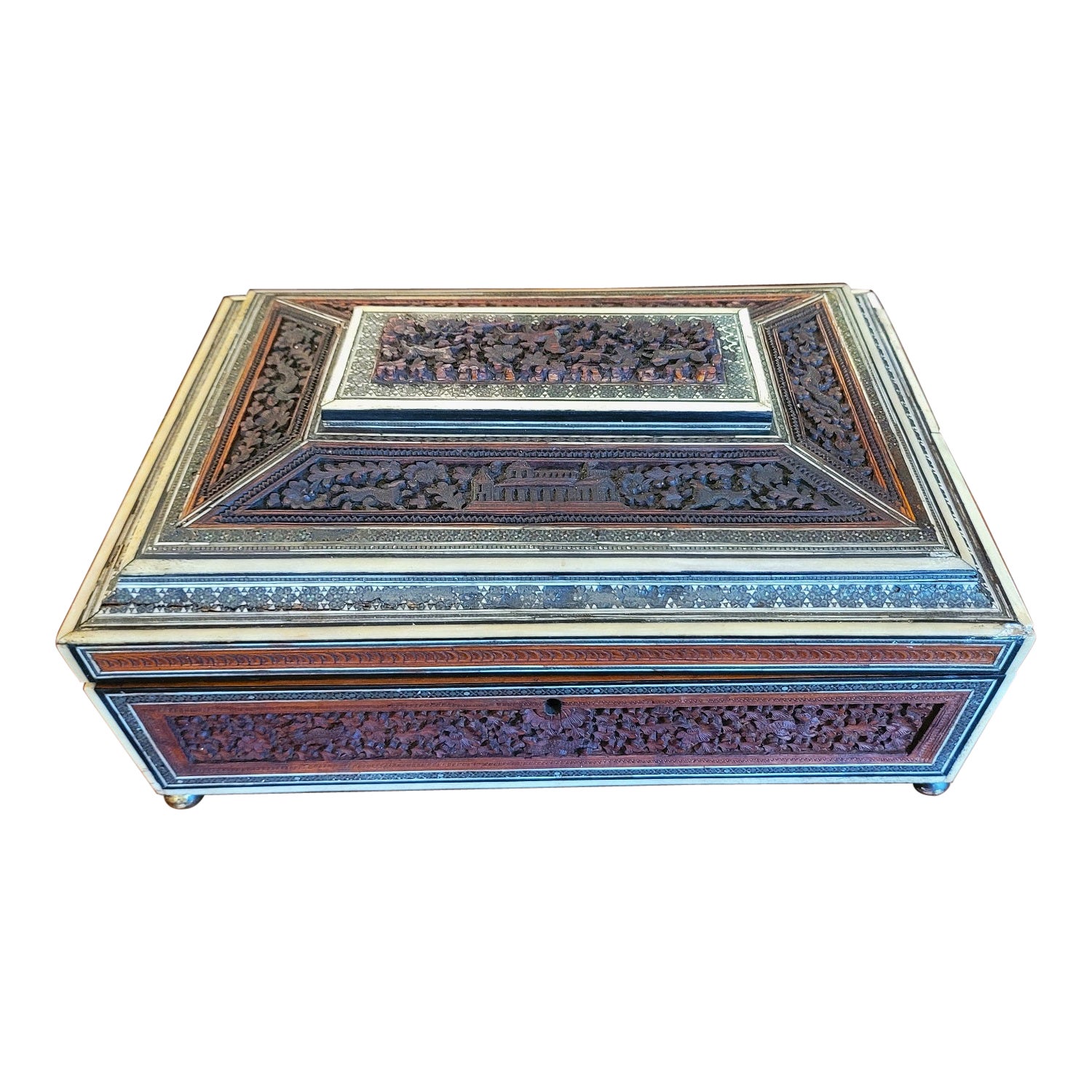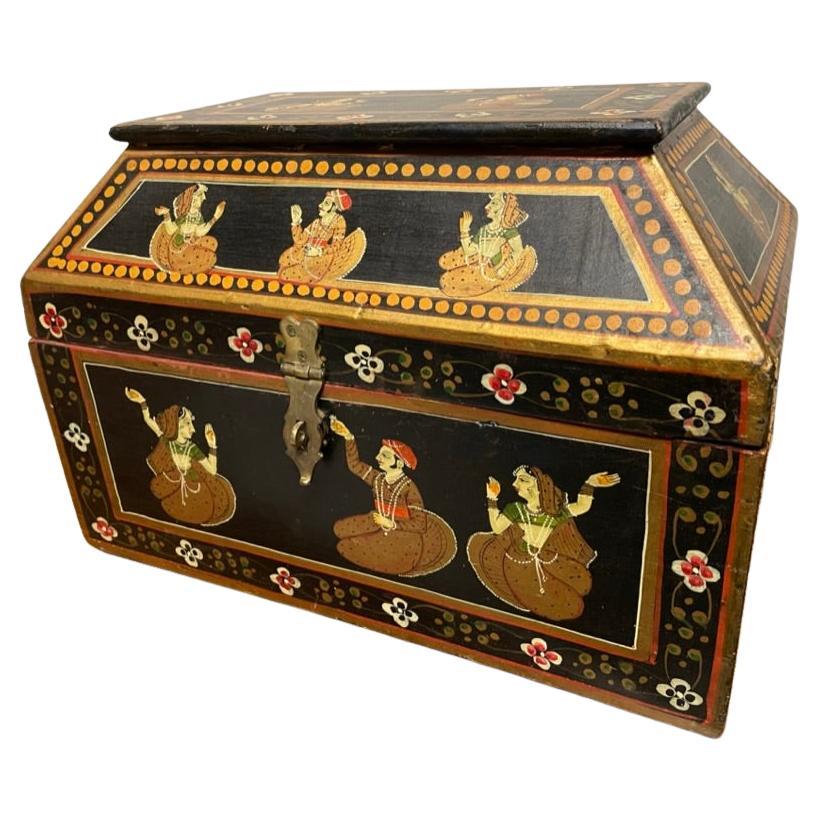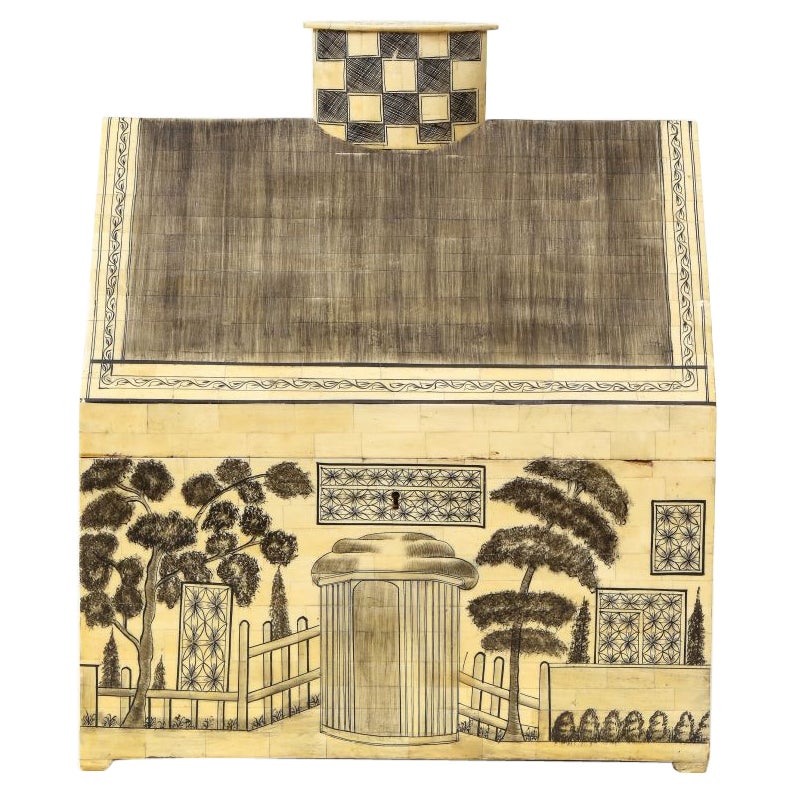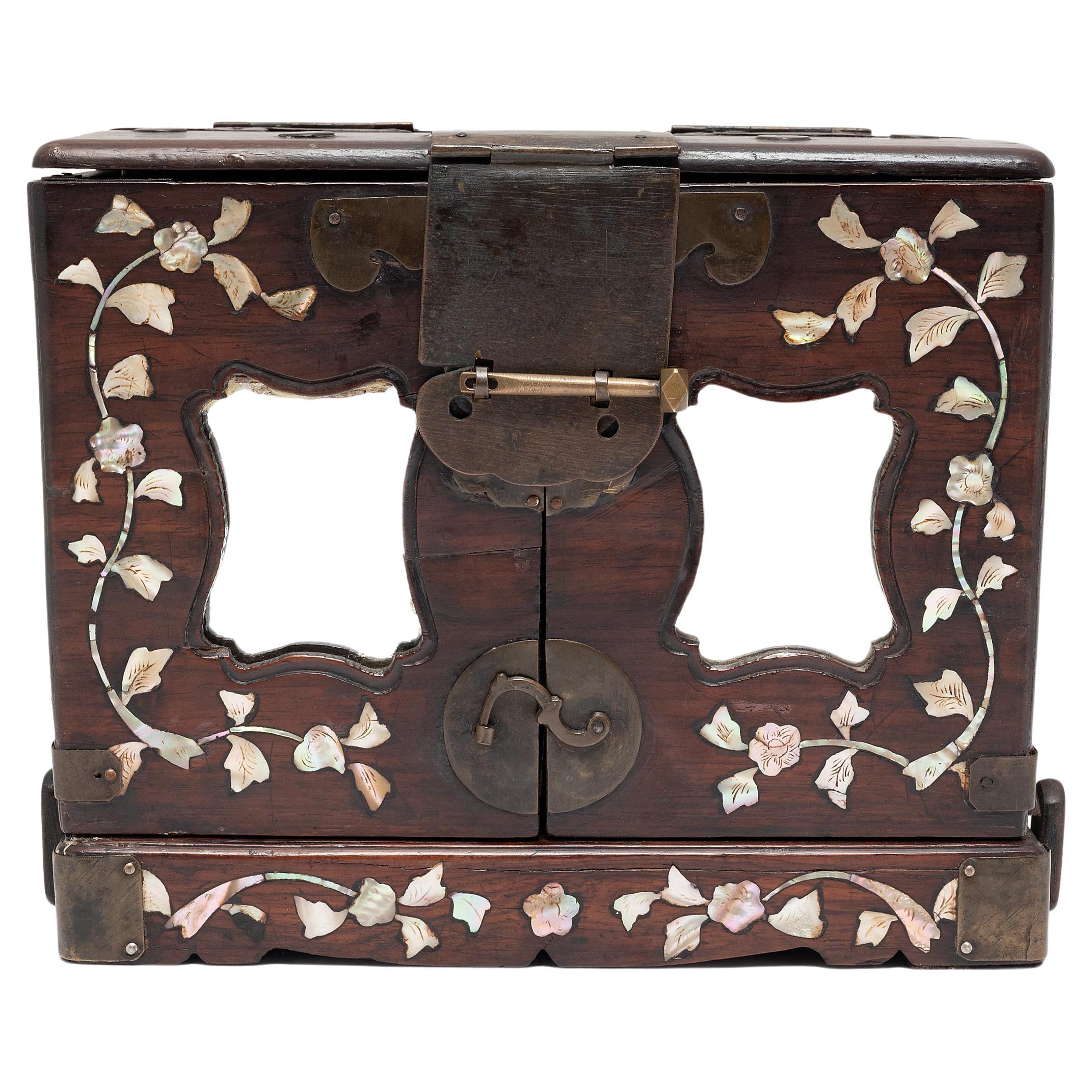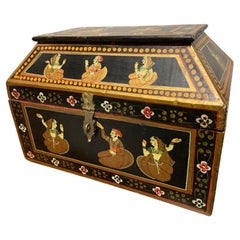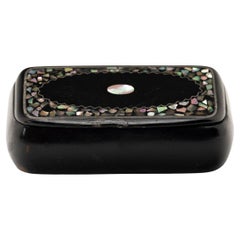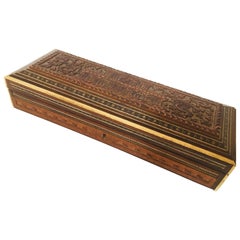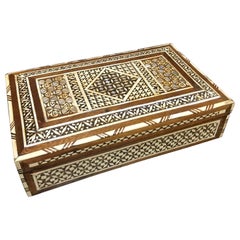
Anglo Indian Box with Mother-of-Pearl Inlay
View Similar Items
Want more images or videos?
Request additional images or videos from the seller
1 of 15
Anglo Indian Box with Mother-of-Pearl Inlay
About the Item
- Dimensions:Height: 2.25 in (5.72 cm)Width: 8 in (20.32 cm)Depth: 4.875 in (12.39 cm)
- Style:Anglo-Indian (Of the Period)
- Materials and Techniques:
- Place of Origin:
- Period:
- Date of Manufacture:1890
- Condition:Wear consistent with age and use.
- Seller Location:Stamford, CT
- Reference Number:1stDibs: LU803012251151
About the Seller
5.0
Platinum Seller
These expertly vetted sellers are 1stDibs' most experienced sellers and are rated highest by our customers.
Established in 1990
1stDibs seller since 2004
407 sales on 1stDibs
More From This SellerView All
- Anglo Indian Brass Box with Bone InlayLocated in Stamford, CTA handsome and unusual brass strongbox with intricate patterned polished bone inlay on the top. The inside with a till, the lid of the till decorated with incised designs. This box c...Category
Early 20th Century Sri Lankan Anglo-Indian Decorative Boxes
MaterialsBrass
- Anglo Indian Decorative Box with Painted Figures of DancersLocated in Stamford, CTVery decorative hand painted in the Anglo-Indian style. Painted back and gold with each framed panel filled with female dancers and male flower bearing suiters. A colorful and fun, a...Category
Mid-20th Century Indian Anglo-Indian Decorative Boxes
MaterialsWood
- 19th Century Anglo-Indian Sadeli Inlaid Work Box Traveling Writing DeskLocated in Stamford, CTA stunning camel bone, ebony and metal inlaid sadeli work box with portable writing desk, Bombay, circa 1850. The sandalwood body of faceted rec...Category
Antique Mid-19th Century Indian Anglo-Indian Decorative Boxes
MaterialsMetal
- 19th Century English Regency Mahogany Box With Satinwood InlayLocated in Stamford, CTEnglish Regency mahogany box with satinwood inlay. The four corners of the top are inlaid with lovely triangular scalloped decoration. All the border molding are also satinwood inlay...Category
Antique Early 19th Century English Regency Decorative Boxes
MaterialsMahogany, Satinwood
- American Walnut and Fruit Wood Box With Geometric Inlay, Circa 1900Located in Stamford, CTWonderful 19th century American box with intricate and beautiful geometric inlay. This was created by a true craftsman. Interior painted with removable sectioned tray. 15.75 inches ...Category
Early 20th Century American Folk Art Decorative Boxes
MaterialsFruitwood, Walnut
- 19th Century American Rosewood Box With Fruit Wood Star Inlay, Fun InteriorLocated in Stamford, CTA beautifully made hand carved rosewood and fruit wood box with heart shaped bone escutcheon.The whimsical interior lined with paper carpet pattern from...Category
Antique Late 19th Century American Decorative Boxes
MaterialsGlass, Fruitwood, Rosewood
You May Also Like
- Anglo Indian Micro Mosaic Inlay Jewelry BoxLocated in New York, NYExquisitely crafted early 20th century Anglo Indian micro mosaic Sadeli box with gorgeous antique Persian geometric pattern. The finely detailed box featu...Category
Early 20th Century Indian Anglo-Indian Jewelry Boxes
MaterialsFruitwood, Bone
- English Snuff Box with Mother-of-Pearl InlayLocated in Chicago, ILGlimmering with iridescent mother-of-pearl inlay, this English papier-mâché snuff box dates to the late 19th century. Black lacquer envelopes the papier-mâché case to form a durable ...Category
Antique Late 19th Century British Victorian Snuff Boxes and Tobacco Boxes
MaterialsSilver
- Fine Antique Anglo Indian Bombay Inlay BoxBy RajhastaniLocated in North Hollywood, CAFine antique Anglo-Indian hand carved wooden jewelry box inlaid. Nice Indian Mughal pen box handcrafted in very fine Sadeli micro mosaic...Category
Antique Late 19th Century Indian Islamic Decorative Boxes
MaterialsWood
- Inlaid Mother Of Pearl Indian BoxLocated in Tampa, FLA wonderful 1920s wood box inlaid with mother of pearl from India. Box is lined with a blue velvet interior and is an inch deep.Category
Vintage 1920s Indian Decorative Boxes
MaterialsWood, Mother-of-Pearl
- Painted Decorated Anglo Indian Box with ElephantsLocated in Palm Beach, FLA very charming Anglo Indian painted decorated box with elephant, people, peacocks and mystical animal motifs, an outside bracket base and a brass...Category
Early 20th Century Indian Anglo-Indian Boxes
MaterialsHardwood
- 19C Anglo Indian Highly Carved Padouk Wood with Sadeli Mosaic Inlay Sewing BoxLocated in Dallas, TXPRESENTING A LOVELY 19C Anglo Indian Highly Carved Padouk Wood with Sadeli Mosaic Inlay Sewing Box. Made in Bombay, India, circa 1880. The box is made of sandalwood with highly carved raised padouk wood panels on all sides, depicting temple scenes, animals and foliage. The box is in a sarcophagus form. It is edged in bone (and we can tell it is bone and not ivory, from the color and evidence of capillaries, which are not found in ivory), and banded with Bombay Sadeli mosaic and ebony veneer. The lid opens to reveal a removable tray with various open compartments and lidded compartments. 5 lidded compartments, 1 unlidded compartment and 8 holders for thimbles, etc The tray lifts to reveal a blue velvet (original) lined section, for storing jewelry etc, with sections for collars etc. The inside of the lid has a removable mirror (the mirror is missing on this one but can easily be replaced). Behind the mirror is the original green velvet lining. It has its original brass carry handles on the sides and sits on 4 silvered button feet (of recent origin). Some repairs to the exterior and condition issues (priced accordingly), but still a LOVELY COLLECTIBLE box! These boxes were made by superb Indian craftsmen, specifically for sale to the ruling British elite. These types of boxes, carved padouk and sandalwood, (whilst beautiful and superbly crafted) were of a lesser quality, than the more profusely and intricately mosaic inlay, tortoiseshell and ivory boxes, made for the British ‘Upper Classes’ in the areas of Bombay and Vizagapatam. These type of boxes were much more affordable back in 1880 (and indeed today) and would probably have been bought by mid-level diplomats, civil servants or visitors. Sewing boxes (in general), were in EVERY Victorian home in Britain in the 19th century and like other boxes etc were ‘status symbols’ of your place in society! The more ornate the box, the more ‘Upper Class’ you were! SADELI MOSAIC: “Anglo Indian boxes were made in India for the English residents from the early part of the 18th century. They were brought back or sent back to England usually by the people who had commissioned them. From the beginning of the nineteenth century they were imported more commercially, although not in any significant numbers until the middle decades. They were very highly valued, especially the early ones, to the extent that the designs were copied on late 19th and early 20th century tins. The ancient art of Sadeli Mosaic is said to have been introduced from Shiraz in Persia via Sind to Bombay, a long time before the Anglo Indian boxes were made. It was a technique, which required a high degree of skill and patience. It was executed very lavishly, in that the frequent cuts wasted a great amount of the precious materials used. The workmanship was however more than commensurable to the value of the materials. Ivory, silver, pewter (or other metals), wood and Horn were cut into faceted rods which were bound together to form geometric patterns. When the glue has set, the rods were sliced in transverse sections. This gave the maker a number of angled circular pieces in the original pattern. Several variations of patterns could be achieved by combining the materials in different ways. The ivory was sometimes dyed green to give an extra color. The mosaic pieces in a combination of patterns, often separated by ivory, ebony, Horn or silver stringing were used to veneer sandalwood boxes. In the early boxes, which date from the turn of the 18th to the 19th century, there are large panels of mosaic covering tops and sides of boxes. It took incredible skill to cover such large areas without any shakes or wavering of the pattern. The corners and joins on these boxes are impeccably matched. The makers (reputed to be Persian) of Sadeli mosaic made in the first two decades of the 19th century displayed a total understanding of the qualities of the different materials they used. They combined substances, which can expand and contract according to atmospheric conditions with others, which are hard and unyielding. The result was a sharp definition of the lines and patterns, which made up the whole design. On the early boxes the designs look deceptively simple. The fact is, they emerged from a culture, which had mastered geometry and understood how to generate a pattern from a set number of points. The patterns are so harmoniously combined that their incredible complexity is not immediately apparent. The earliest Sadeli boxes...Category
Antique Late 19th Century Indian Anglo-Indian Decorative Boxes
MaterialsBone, Padouk, Sandalwood
Recently Viewed
View AllMore Ways To Browse
Pearl And Bone Inlay
Anglo Indian Bone Inlay
Pearl Inlay Desk
Antique Sandalwood
Mother Of Pearl Inlay Desk
Anglo Bone Box
Mother Of Pearl Inlaid Desk
Anglo Indian Bone Box
Anglo Indian Desk
Indian Mother Of Pearl Inlay
Inlaid Desk Bone
India Sandalwood
Sandalwood Box
Antique Sandalwood Box
Indian Inlay Desk
Black Brass Box
Antique Work Box Boxes
Antique Work Boxes

